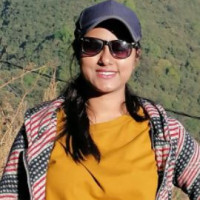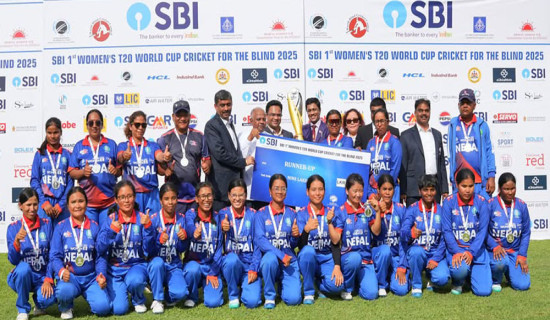- Monday, 24 November 2025
Sunapati Rural Municipality declared Thangka Art Hub
Sunapati, Apr. 9: Sunapati Rural Municipality of Ramechhap District has been declared a Thangka Art Hub amid a programme held at Ward No 4 of the rural municipality on Monday.
Yub Raj Chaulagain, a Member of the Provincial Assembly Bagmati Province, declared the rural municipality as the Thangka Art Hub.
Announcing the rural municipality as the Thangka art hub, a three-month-long Thangka workshop was also announced, starting on Tuesday.
Speaking at the programme, Provincial Assembly member Chaulagain said that people from Sunapati should take pride in the programme and promote it in the best possible way to attract people to the village.
He further added that Thangka art is tangible and connected with culture, tourism, and lifestyle and contributes to the national economy.
Jointly organised by Nepal Academy of Fine Arts (NAFA), Sunapati Rural Municipality, and Sunapati Pragya Pratishtan, the programme aims to contribute to the national economy, help promote a green economy, promote village tourism, and encourage people to return to the village.
Devendra Thumkeli Kafle said that the main aim of declaring Sunapati Rural Municipality as a Thangka Hub is to respect senior artists, transfer this art to the young generation, promote green tourism, and contribute to the national economy. In the first phase of the programme, it is planned to conduct a three-month-long Thangka training at Ward 4, added Kafle.
Thangka artists Karma Doj Singh Tamang and Tahal Bahadur Lama will conduct the training.
Man Bahadur Tamang, Vice-Chancellor of Sunapati Pragya Pratishtan, said, “Through the Thangka Hub programme, we plan to generate employment for all villagers, and we aim to develop Sunapati Rural Municipality as the school of Thangka.” Chairman of the rural municipality Thulo Kanchha Tamang said, “I am a Thangka artist, I used to serve people during the day and make Thangka at night.”
He further said that Thangka could be a primary economic source for the residents of the rural municipality, and he is committed to making this programme a center of attraction. Artist Karma Dhwaj Singh Tamang expressed his joy regarding the establishment of the Thangka hub, stating that although he could opt to settle abroad, he has chosen to remain in his village. He intends to actively promote and uplift his village, aiming to draw in residents from Kathmandu and abroad.
Hira Bahadur Tamang, with over 16 years of experience in creating Thangka paintings, expressed enthusiasm for the programme, believing it will significantly promote the art form and foster thriving business opportunities.
Lal Bahadur Tamang, an artist who had left Thangka art for forty years due to its dim business prospects, shared his delight at the renewed enthusiasm for this traditional craft. He expressed willingness to return to Thangka art happily if the programme succeeds in boosting the Thangka business.
Ward-4 chairman Dandup Tamang said that the majority of senior Thangka artists belong to Ward 4, and Kulman Ghising, Managing Director at Nepal Electricity Authority Nepal, belongs to the same ward. Therefore, Ward. No-4 is declared as a Thangka hub.
Sunapati Rural Municipality is renowned for its vibrant Thangka painting tradition and Galaicha (Nepali carpet) weaving.
Practically every household in this area is engaged in Thangka art and Galaicha weaving craft.
Sunapati is chosen as the Thangka Hub because the rural municipality boasts a rich heritage of Thangka painting, with the majority of locals well-versed in the craft.
The initial phase of the programme will begin in the Bhalwadi and Dahu villages of Sunapati Ward 4, home to 3,300 residents.
Nirimaya Lama, a resident of Sunapati Rural Municipality and a council member of NAFA, said that the initiative will gradually expand across the region.
The residents expressed their belief that with government support to promote Thangka art within the village and establish a conducive environment for its creation, as well as for the development of the art business, villagers who have migrated elsewhere, both within the country and abroad, would be encouraged to return to their roots in the village.

















